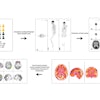A "CT first" strategy is an effective way to determine if patients with stable chest pain need revascularization with invasive coronary angiography (ICA), researchers have found.
The results could improve patient care by helping them avoid unnecessary ICA -- and could curb healthcare costs, said senior study author Markus Scherer, MD, of Atrium Health-Sanger Heart and Vascular Institute in Charlotte, NC. The study findings were presented February 1 at the American College of Cardiology (ACC) Cardiovascular Summit, underway in Washington, DC.
"While care must be individualized, for patients with unknown or unestablished coronary artery disease, the transition to a 'CT first' strategy should be a high priority for cardiovascular care providers," he said. "The noninvasive approach has a lower risk and cost than a diagnostic heart catheterization and, for the CT approach -- but not stress testing -- provides information on the absence, presence, and extent of coronary atherosclerosis and whether or not there are high-risk plaques as well as vessel blockages, which helps streamline patient management and risk reduction."
Previous research has shown that less than 40% of patients with stable chest pain undergoing ICA are diagnosed with obstructive coronary artery disease, and recent clinical trials have demonstrated a benefit to using CT angiography (CTA) first to assess these patients, the authors noted.
The team assessed 786 patients who had no previous diagnosis of coronary artery disease and who underwent elective ICA for suspected angina between October 2022 and June 2023. Most study participants were male and white.
Pre-ICA testing included the following:
- No noninvasive testing with direct referral to ICA (44%)
- Coronary CTA (36%)
- Stress myocardial perfusion imaging (15%)
- Stress echocardiogram (3%)
- Stress MRI (2%)
The investigators found that a "CT first" strategy was associated with revascularization in 62% of patients -- compared with 34% for the combination of other modalities or direct ICA referral.
The team cited a number of reasons clinicians may not use this kind of approach, including a lack of availability of high-quality CT scanners or physicians qualified to read cardiac CT exams and habits based on established protocols (such as stress testing).
But since coronary CTA is less expensive than both nuclear myocardial perfusion imaging and ICA, there is a "direct cost saving to patients and third-party payers with the 'CT first' approach," Scherer and colleagues explained.
"From the perspective of a health system, the most financially efficient evaluation approach becomes more important during the transition to a value-oriented health care system," they concluded.




















